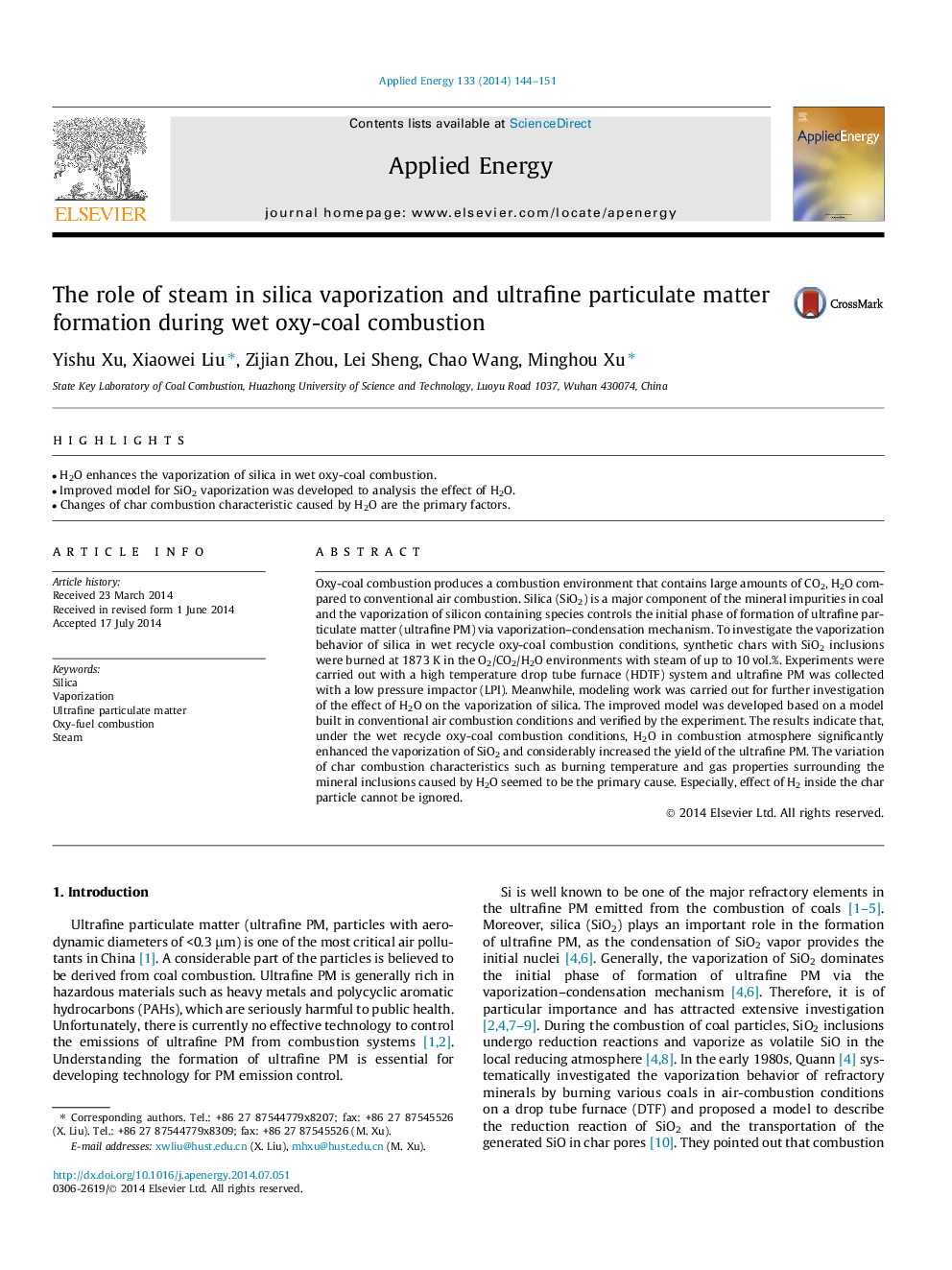| Article ID | Journal | Published Year | Pages | File Type |
|---|---|---|---|---|
| 6689493 | Applied Energy | 2014 | 8 Pages |
Abstract
Oxy-coal combustion produces a combustion environment that contains large amounts of CO2, H2O compared to conventional air combustion. Silica (SiO2) is a major component of the mineral impurities in coal and the vaporization of silicon containing species controls the initial phase of formation of ultrafine particulate matter (ultrafine PM) via vaporization-condensation mechanism. To investigate the vaporization behavior of silica in wet recycle oxy-coal combustion conditions, synthetic chars with SiO2 inclusions were burned at 1873Â K in the O2/CO2/H2O environments with steam of up to 10Â vol.%. Experiments were carried out with a high temperature drop tube furnace (HDTF) system and ultrafine PM was collected with a low pressure impactor (LPI). Meanwhile, modeling work was carried out for further investigation of the effect of H2O on the vaporization of silica. The improved model was developed based on a model built in conventional air combustion conditions and verified by the experiment. The results indicate that, under the wet recycle oxy-coal combustion conditions, H2O in combustion atmosphere significantly enhanced the vaporization of SiO2 and considerably increased the yield of the ultrafine PM. The variation of char combustion characteristics such as burning temperature and gas properties surrounding the mineral inclusions caused by H2O seemed to be the primary cause. Especially, effect of H2 inside the char particle cannot be ignored.
Related Topics
Physical Sciences and Engineering
Energy
Energy Engineering and Power Technology
Authors
Yishu Xu, Xiaowei Liu, Zijian Zhou, Lei Sheng, Chao Wang, Minghou Xu,
